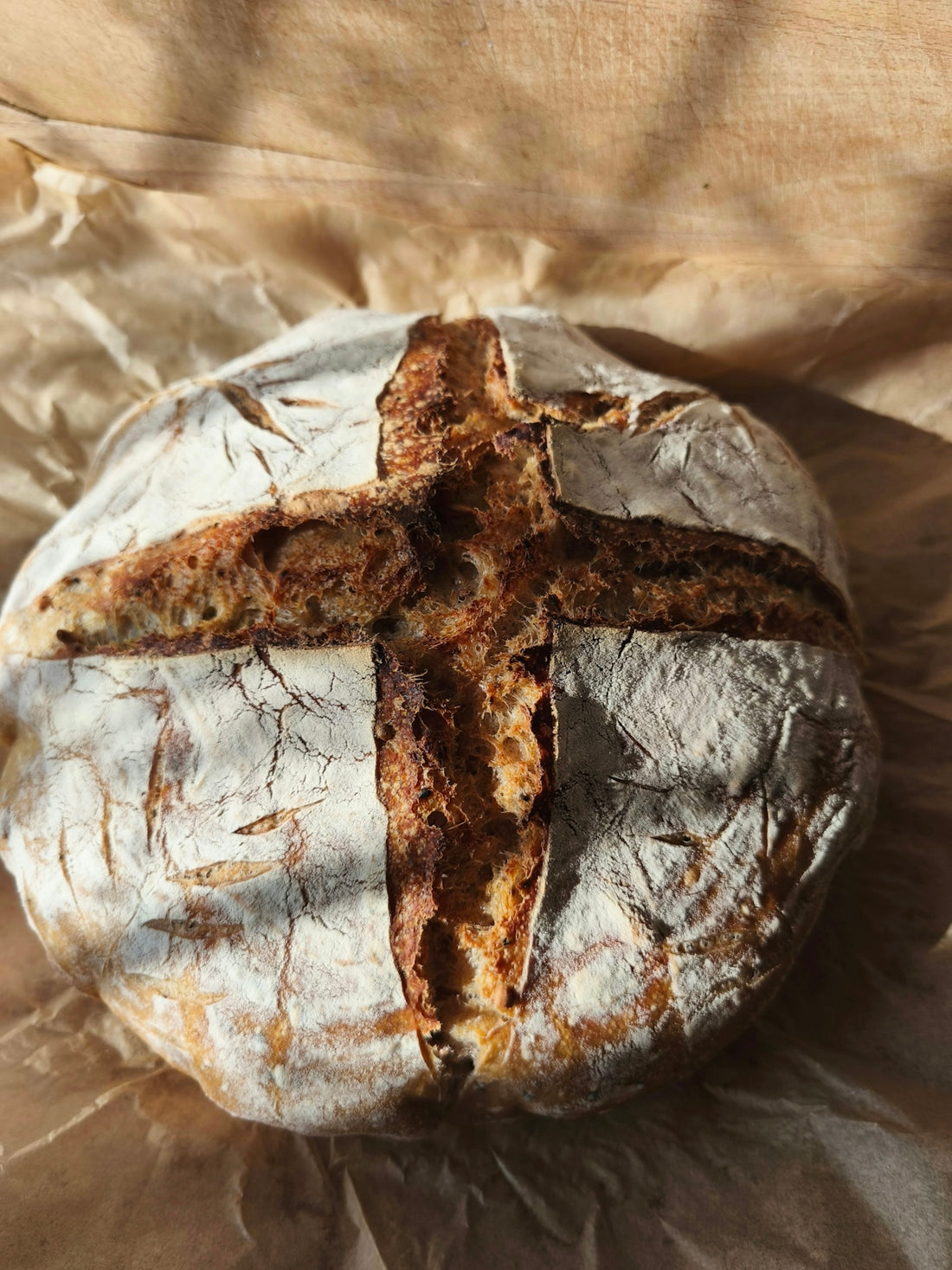
How to Make Homemade Sourdough Bread: An Easy Step-by-Step Guide
Welcome to your ultimate guide to making homemade sourdough bread! Whether you're a seasoned baker or just starting on your sourdough journey, this step-by-step guide will walk you through the process of creating delicious, crusty artisan bread using wild yeast fermentation. Let's dive into the world of sourdough baking!
Why Choose Sourdough?
Before we begin, let's talk about why sourdough stands out:
- Flavor & Texture: Sourdough's unique fermentation process gives it a distinct tangy flavor and chewy texture that many bread lovers prefer over regular bread.
- Health Benefits: Sourdough for diabetics can be a better choice due to its lower glycemic index compared to commercially yeasted breads. The fermentation process aids in breaking down gluten, making it easier to digest and potentially beneficial for those with gluten sensitivities.
- Preservation without Preservatives: Thanks to the beneficial bacteria and wild yeast, sourdough bread naturally stays fresh longer.
Getting Started: The Sourdough Starter
What is a Sourdough Starter?
A sourdough starter is a mixture of flour and water that captures wild yeast and bacteria from the environment, creating a natural leavening agent. A healthy starter is essential for successful sourdough bread.
How to Make Your Own Sourdough Starter
- Mix Flour and Water: Combine 100g of organic whole grain flour with 100g of water in a non-reactive container.
- Fermentation Time: Cover loosely and let it sit at room temperature. This begins the wild yeast fermentation process.
- Daily Feedings: Discard half of the starter and add 100g of flour and 100g of water each day. Refer to our sourdough starter feeding schedule for optimal results.
- Ready to Use: Your starter is ready when it doubles in size within a few hours of feeding and has a tangy aroma.
For a convenient start, consider using the Nonna Bella Dehydrated Sourdough Starter, which carries a Tuscan heritage culture since the 1800s.
How to Feed and Store Your Sourdough Starter
- Feeding: Maintain a regular feeding schedule, ideally every 12 to 24 hours.
- Storage: Keep your starter in the refrigerator if not used daily. Feed it once a week to keep it alive. Learn more about how to store sourdough starter here.
Making Homemade Sourdough Bread
Ingredients
- 500g Bread Flour
- 350g Water
- 100g Active Sourdough Starter
- 10g Salt
Use the Nonna Bella 5kg Digital Kitchen Scale for precise measurements.
Instructions
Step 1: Autolyze
- Mix flour and water until no dry flour remains.
- Cover and let rest for 30 minutes.
Step 2: Add Starter and Salt
- Add the active sourdough starter and salt to the dough.
- Incorporate using the Cake Tools Danish Dough Whisk.
Step 3: Bulk Fermentation
Allow the dough to sit at room temperature for 4–5 hours, performing stretch and folds every 30 minutes for the first 2 hours.
Step 4: Shape the Dough
- Gently shape the dough into a ball and let it rest for 30 minutes.
- For an artisan touch, use Bread Lame Dough Score Cutting Tools to score the surface and help achieve a beautiful crust.
Step 5: Proofing
Move the shaped dough to a proofing basket and refrigerate overnight, or proof at room temperature for 2 hours.
Step 6: Baking
- Preheat your oven to 450°F (232°C) with a Dutch oven inside.
- Bake covered for 20 minutes, then uncover and bake for an additional 25 minutes until golden brown.
How to Get a Crispy Sourdough Crust
- Steam: Baking covered traps steam, creating a crispy crust.
- Scoring Techniques: Proper scoring allows the bread to expand and results in a better crust.
Sourdough Baking Tips and Troubleshooting
Common Issues and Solutions
- Dense Loaf: Check if your starter is active and adjust fermentation times.
- Flat Bread: Your dough may be overproofed. Reduce final proofing time.
For further assistance, our Sourdough Starter Troubleshooting Guide is here to help.
Additional Uses for Sourdough
Sourdough Discard Recipes
Don't waste excess starter! Try sourdough pizza dough, pancakes, or sourdough bagels using your discard.
Is Sourdough Starter with a Long Legacy Better?
Sourdough starters with a long legacy, like our Nonna Bella starter, often have more complex flavors due to the diverse strains of wild yeast and bacteria developed over time.
Tools You Need to Make Sourdough Bread
Invest in essential tools like a Professional Baking Tools Kit to enhance your sourdough baking experience.
Conclusion
Making homemade sourdough bread is a rewarding journey that merges science and art. From nurturing your sourdough starter to perfecting your baking technique, each step is a learning experience that leads to the delightful aroma of freshly baked sourdough filling your home. Whether you crave a traditional Italian sourdough or love experimenting with sourdough discard recipes, this guide is your go-to resource.
Join us at Italian Sourdough for more tips, recipes, and quality sourdough products to elevate your baking adventures.
Happy baking!
